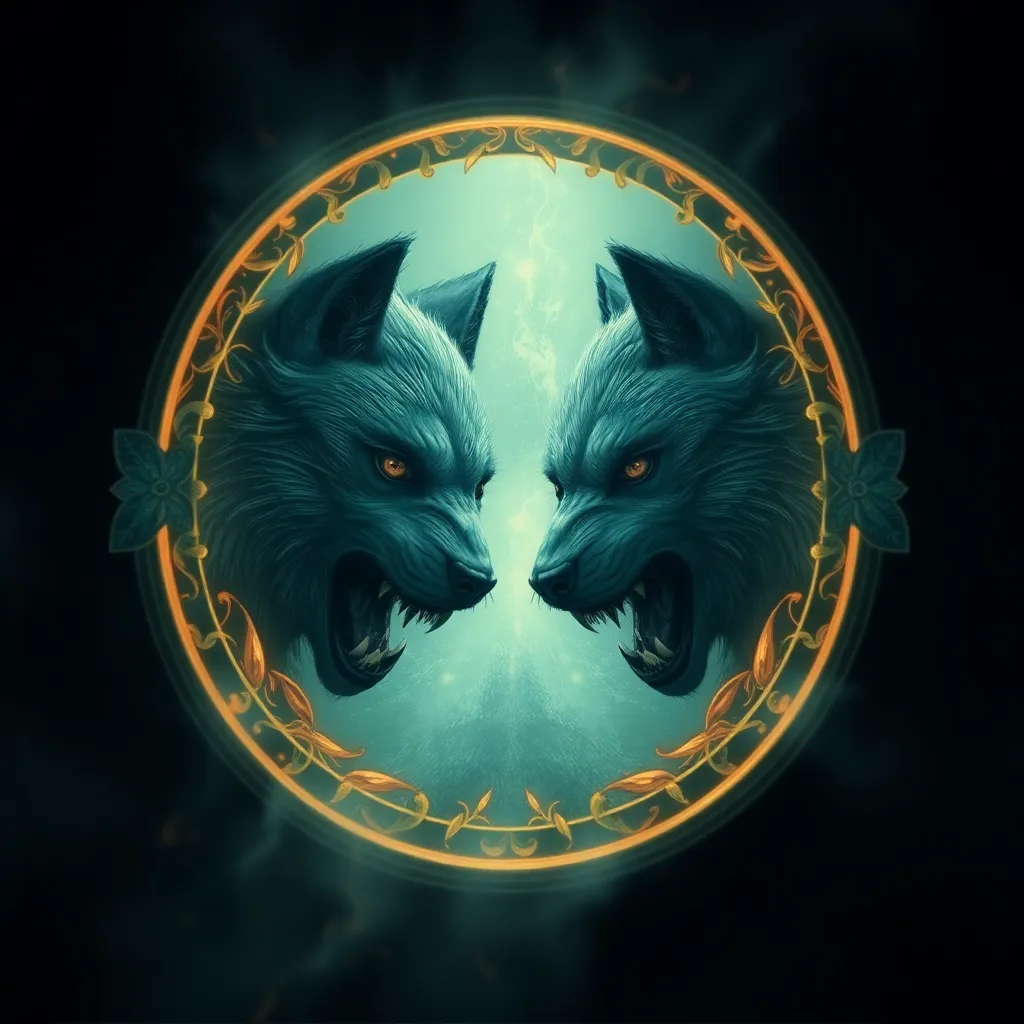The Beast in the Mirror: Exploring the Psychological and Social Dimensions of Lycanthropy
I. Introduction
Lycanthropy, often associated with the mythical transformation of humans into wolves, has captivated cultures across the globe for centuries. At its core, lycanthropy refers to the folkloric ability or power of a human to transform into a wolf or to have wolf-like characteristics. This phenomenon is not merely a subject of horror stories and folklore; it has deep psychological and social implications that resonate in contemporary society.
The cultural significance of werewolves extends beyond mere superstition. They embody the duality of human nature, representing both civilization and primal instinct. This article aims to delve into the psychological and social dimensions of lycanthropy, examining how these aspects shape our understanding of this intriguing subject.
II. Historical Context of Lycanthropy
Lycanthropy has roots in ancient myths and folklore, with narratives found in various cultures, including the Greek myth of Lycaon and Norse legends of shape-shifters. These ancient tales often reflect societal fears and moral lessons, using the werewolf as a metaphor for the untamed aspects of human nature.
The evolution of lycanthropy in literature and film has further popularized the concept. From the early depictions in literature such as “The Werewolf” by Clemence Housman to modern portrayals in films like “An American Werewolf in London,” the werewolf has become a symbol of transformation, duality, and the struggle between man and beast.
Historical cases of alleged lycanthropy, such as those during the witch hunts of the Middle Ages, reveal societal impacts where individuals claiming to possess lycanthropic traits faced persecution. These events underscore the intersection of fear, superstition, and societal norms in shaping the narrative of lycanthropy.
III. Psychological Perspectives on Lycanthropy
In modern psychology, lycanthropy can be viewed through the lens of clinical lycanthropy, a rare psychiatric syndrome wherein individuals believe they can transform into animals. This disorder raises questions about identity, transformation, and the nature of reality.
The role of identity and transformation is central to many psychological theories surrounding lycanthropy. The transformation into a wolf can symbolize a desire for liberation from societal constraints, reflecting deeper issues of identity and self-acceptance.
Moreover, there is a connection between trauma and the manifestation of lycanthropic behavior. Individuals who have experienced significant trauma may express their distress or altered states of being through fantasies of transformation, using the werewolf as a metaphor for their inner turmoil.
IV. Social Dimensions of Lycanthropy
The narratives surrounding lycanthropy are deeply intertwined with community and social acceptance. In many stories, werewolves are depicted as outcasts, struggling for acceptance in a world that fears them. This aspect highlights the importance of understanding and empathy in the face of social stigmatization.
Individuals claiming lycanthropic traits often face stigmatization, leading to isolation and mental health challenges. The fear and misunderstanding surrounding these claims can exacerbate feelings of loneliness and alienation.
- Social acceptance can lead to supportive communities that foster understanding.
- Negative stigmatization can result in harmful consequences for individuals, including mental health deterioration.
Furthermore, lycanthropy can be compared to other social phenomena such as otherkin and furries, which involve individuals identifying with non-human entities. These movements reflect broader discussions about identity and the fluid nature of self-perception in contemporary society.
V. Cultural Representations of Lycanthropy
Werewolves in contemporary media often serve as symbols for various themes, such as the struggle between good and evil, the conflict between nature and nurture, and the exploration of the human psyche. Films, television series, and literature depict werewolves in diverse ways, influencing public perception of lycanthropy.
The symbolism of the wolf in various cultures carries psychological implications. In many societies, wolves represent loyalty, strength, and cunning, but they also embody fear and the unknown. These characteristics contribute to the dual nature of werewolves as both heroic and monstrous figures.
The impact of media portrayals on public perception cannot be understated. Positive representations can lead to greater understanding and acceptance, while negative portrayals can perpetuate stereotypes and stigmatization.
VI. The Intersection of Nature and Nurture in Lycanthropy
The debate surrounding genetic predispositions versus environmental influences is crucial in understanding lycanthropy. While some may argue that certain individuals are genetically predisposed to identify with or exhibit lycanthropic traits, others emphasize the role of cultural beliefs and societal influences.
Cultural beliefs play a significant role in shaping the understanding of lycanthropy. For instance, in some cultures, shapeshifting is viewed as a spiritual gift, while in others, it is seen as a curse. These differing perspectives highlight the complexity of lycanthropy as a concept influenced by cultural context.
Case studies of individuals claiming lycanthropic traits reveal the intricate interactions between nature and nurture, showcasing how personal experiences and societal expectations contribute to their identities.
VII. Therapeutic Approaches to Understanding Lycanthropy
Addressing lycanthropic tendencies through psychological therapies can be beneficial for individuals struggling with these identities. Cognitive Behavioral Therapy (CBT) and other therapeutic modalities can help individuals process their experiences and navigate their identities in a healthier way.
The role of art and creative expression in therapy cannot be overlooked. Many individuals find solace in expressing their feelings through creative outlets, allowing them to explore their identities and confront their fears.
Community support and acceptance serve as essential components in the healing process. Creating supportive environments where individuals can share their experiences fosters understanding and reduces feelings of isolation.
VIII. Conclusion
The exploration of the psychological and social dimensions of lycanthropy reveals the complexities surrounding this multifaceted phenomenon. From ancient myths to modern interpretations, lycanthropy continues to fascinate and provoke thought.
Empathy and understanding are crucial in addressing the challenges faced by those who identify with lycanthropic traits. As society evolves, so too must our engagement with these narratives, fostering a more inclusive and accepting environment.
Future directions for research should focus on the intersection of cultural beliefs, mental health, and social acceptance, aiming to create a comprehensive understanding of lycanthropy and its place in modern society.



